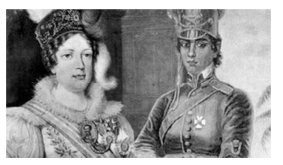Questões de Vestibular UNB 2022 para Vestibular - Inglês
Foram encontradas 30 questões

are examples of the “famous figures” alluded to at the beginning of the second paragraph of the text.

Considering the ideas and linguistic aspects of the text above, judge the follow item.
It can be correctly inferred from the text that the general public is unaware of many different facts which led to Brazilian independence.

In the title of the letter alluded to in the first paragraph, the word “her” is used four times with the same meaning and could correctly be replaced by his in all four cases, had the letter been written to the Prince.

Considering the ideas and linguistic aspects of the text above, judge the follow item.
Even though the press supported women who were in favor of Brazilian independence, it did not help them in their struggle for their rights.

The passage “which they believed was a key factor” (first paragraph) could be correctly rewritten in the passive voice as which was believed to be a key factor, without this changing the meaning and coherence of the text.